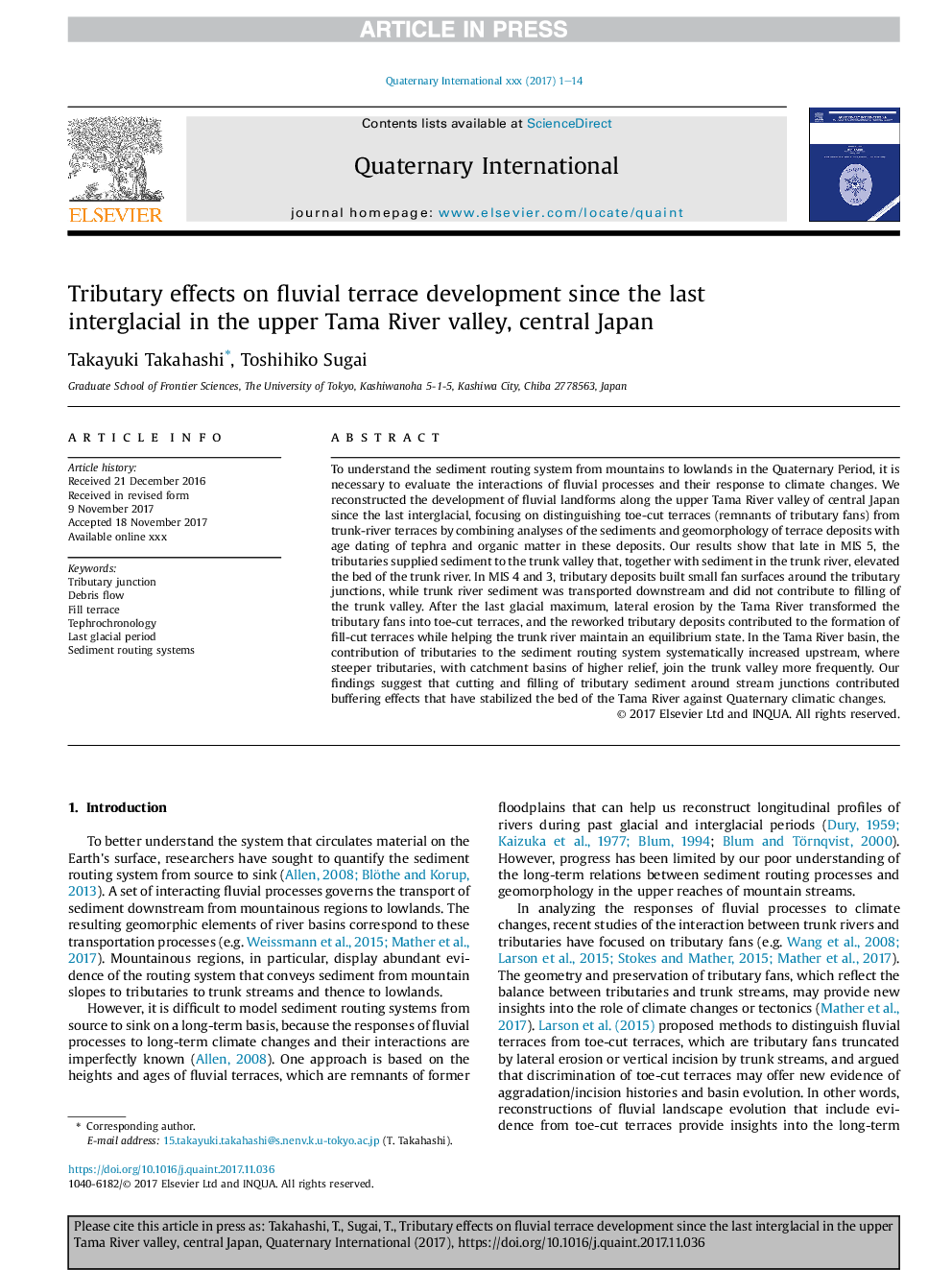| Article ID | Journal | Published Year | Pages | File Type |
|---|---|---|---|---|
| 7450020 | Quaternary International | 2018 | 14 Pages |
Abstract
To understand the sediment routing system from mountains to lowlands in the Quaternary Period, it is necessary to evaluate the interactions of fluvial processes and their response to climate changes. We reconstructed the development of fluvial landforms along the upper Tama River valley of central Japan since the last interglacial, focusing on distinguishing toe-cut terraces (remnants of tributary fans) from trunk-river terraces by combining analyses of the sediments and geomorphology of terrace deposits with age dating of tephra and organic matter in these deposits. Our results show that late in MIS 5, the tributaries supplied sediment to the trunk valley that, together with sediment in the trunk river, elevated the bed of the trunk river. In MIS 4 and 3, tributary deposits built small fan surfaces around the tributary junctions, while trunk river sediment was transported downstream and did not contribute to filling of the trunk valley. After the last glacial maximum, lateral erosion by the Tama River transformed the tributary fans into toe-cut terraces, and the reworked tributary deposits contributed to the formation of fill-cut terraces while helping the trunk river maintain an equilibrium state. In the Tama River basin, the contribution of tributaries to the sediment routing system systematically increased upstream, where steeper tributaries, with catchment basins of higher relief, join the trunk valley more frequently. Our findings suggest that cutting and filling of tributary sediment around stream junctions contributed buffering effects that have stabilized the bed of the Tama River against Quaternary climatic changes.
Related Topics
Physical Sciences and Engineering
Earth and Planetary Sciences
Geology
Authors
Takayuki Takahashi, Toshihiko Sugai,
